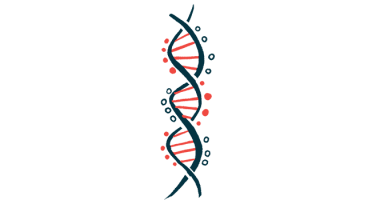Uric Acid Lower in Adults With PWS and Obesity, Study Shows

Levels of uric acid in the blood are lower in adults with Prader-Willi syndrome (PWS) who are obese than in people without PWS but who also are obese, a study shows.
Fat-free body mass was the strongest predictor of uric acid levels.
Researchers suggested that lower uric acid in PWS patients is due to genetic predisposition to different body composition and healthier metabolic characteristics.
The study with these findings, “Fat-Free Mass Is Better Related to Serum Uric Acid Than Metabolic Homeostasis in Prader-Willi Syndrome,” was published in the journal Nutrients.
People with PWS typically develop an insatiable appetite and chronic overeating (hyperphagia), which may result in severe obesity.
Uric acid is a normal waste product generated by the breakdown of molecules called purines. It is a recognized blood marker of metabolic impairment, as high levels of uric acid are associated with obesity. Yet, no study has analyzed uric acid and its relationship to clinical features of PWS.
To fill this knowledge gap, investigators based at the IRCCS Istituto Auxologico Italiano, in Italy, enrolled 89 adults with PWS (mean age 28.4) to test the impact of genetics, biochemical factors, and body composition on uric acid levels.
The study also included 180 healthy people (controls) matched for age, sex, and body mass index (BMI).
Specifically, the genetic cause of PWS was a deletion in chromosome 15 known as 15q11–q13 in 67 patients (75.2%), while 21 patients (23.6%) had maternal uniparental disomy.
All participants underwent body measurements for height and weight. Obesity was defined as a BMI greater than 30 kilograms per square meter (kg/m2).
Lung function and resting energy expenditure (REE) were determined in a specialized room to measure resting oxygen uptake and carbon dioxide production. In turn, body composition was assessed by measuring percent body fat mass and fat-free mass.
Blood samples were collected to measure uric acid, as well as glucose, total cholesterol, high density (HDL) and low-density (LDL) cholesterol, and triglycerides.
In PWS patients, mean BMI values ranged between 17.2 (underweight) to 56.7 kg/m2, which means severely obese; 16.8% of patients were normal-weight, 4.6% were overweight (27.1 kg/m2), 68.5% were obese (39.9 kg/m2), and 29.2% showed severe obesity. In the control group, BMI showed a similar range, from 18.7 to 59.4 kg/m2.
Compared to controls, patients had significantly higher body fat mass, and lower fat-free mass and REE. Patients also showed lower levels of total and LDL-cholesterol than controls.
As for uric acid levels, they ranged from 2.2 to 9.2 mg/dL in people with PWS, and were lower, on average, than for controls. The normal range is from 2.5 to 8 mg/dL.
While uric acid levels were similar between non-obese patients and controls, they were significantly lower in PWS patients who were obese than in weight-matched controls (5.5 vs. 6.6 mg/dL).
Abnormally high levels of uric acid (hyperuricemia) were found in 19.1% of patients and 33.7% of controls. Men with PWS showed higher uric acid levels than women, but no sex differences were seen in hyperuricemia. Also, no differences were identified between those with known different genetic causes.
A statistical analysis found an association between uric acid levels and fat-free mass. Each increase in one kg of fat-free mass was linked to a 4.4% higher likelihood of hyperuricemia. A direct relationship also was found between uric acid and REE.
Fat-free mass and levels of triglycerides were significant predictors of uric acid levels. When a variable known as fat-free mass index was used to account for muscle mass, sex, obesity, age, and triglycerides were associated with sUA.
“[Fat-free mass] is a strong predictor of sUA,” the researchers wrote. “PWS is associated to lower sUA levels than controls likely due to genetic predisposition to different body composition and healthier metabolic phenotype.”
“Further studies are warranted to assess purine metabolism and the clinical significance of the [Fat-free mass] index in Prader-Willi syndrome,” they added.






